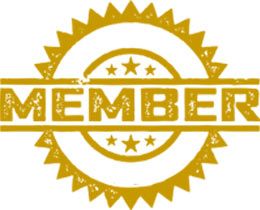Minor Cuts and Lacerations Treatment Clinic Q&A
A cut is a skin crack or opening. A laceration is another term for it. Among the symptoms of a cut or laceration are: bleeding, sensation (numbness, tingling) issues below the incision site, and pain. Get treatment today for your cuts or lacerations. Contact our team of healthcare professionals today at Eastway Medical Clinic or visit us online to book an appointment. We are conveniently located at 1220 Eastway Drive Charlotte, NC 28205.




Table of Contents:
What is the real difference between a cut and a laceration?
What are the different types of cuts and lacerations?
When should I see a doctor about a laceration?
How do you treat lacerations and cuts at Eastway Medical Clinic?
Cuts and lacerations both refer to injuries caused by sharp objects, such as knives or glass shards. Both would generally bleed, but cuts are considered minor wounds while lacerations are usually more severe injuries.
Often, cuts will be treatable at home with the use of a first aid kit or a bandage. In the case of a cut, the skin will be damaged, but the bleeding can be interrupted with pressure, bandages, and antibacterial ointment. It’s important to carefully wash the wound before home treatment to avoid infection. Bandages and similar home treatments can often help with deeper cuts and lacerations. However, depending on the severity of the cut or laceration, medical attention may be required.
Lacerations are typically deeper cuts in the flesh. In severe cases, lacerations can cut tendons and ligaments as well as the flesh, sometimes down to the bone. There is typically no easy way to stop bleeding from lacerations without medical attention.
Different types of open wounds include abrasions, lacerations, punctures, and avulsions. These vary in causes, levels of bleeding, and severity.
When skin rubs or scrapes against a rough or hard surface, it can cause an abrasion. To prevent infection, the wound needs to be scrubbed and cleaned. There’s usually not much bleeding. Lacerations are deep cuts or tears in the skin.
A laceration is often caused by an accident with a knife, a tool, or a machine. When a deep laceration occurs, bleeding can be excessive and rapid. Punctures are tiny holes caused by objects with long, pointy ends, such as nails or needles.
A puncture may not bleed much, but it can damage internal organs if it is deep enough. It is important to get a tetanus shot immediately after any puncture wound, even if it is a small one.
An avulsion occurs when the skin and tissue beneath it are partially or completely torn away. An avulsion usually occurs after a violent accident, such as a body-crushing accident, explosion, or gunshot. When experiencing an avulsion, the bleeding is heavy and rapid.
In certain situations, an individual should always seek medical attention following a laceration. If an object was dirty or rusted, caused the cut. There is a deep cut that extends more than a quarter inch. An area of the body is cut over a joint. Symptoms, in addition to bleeding, accompany the laceration.
Even after 15 minutes of applying pressure, the cut won’t stop bleeding. There is visible muscle, fat, or bone. And when cuts occur in cosmetically sensitive areas, such as on the face, Individuals should always consult a physician if they are unsure if they need care after suffering from a laceration.
The first step in treating lacerations and cuts involves stopping the bleeding. When direct pressure isn’t sufficient, a blood pressure cuff may be used to temporarily assist cuts on the legs and arms. In some cases, pain or numbing medication will be administered. The area around the wound will be cleaned.
Depending on the area and size of the cut or laceration, the doctor will decide the best method to repair the wound. Minor cuts are sometimes closed with adhesive tape or tissue glue. Deeper cuts may require stitches.
Eastway Medical Clinic is available to provide fast-acting treatment and relief for cuts and lacerations. Contact us today through our website to book your next appointment. We are conveniently located at 1220 Eastway Drive Charlotte, NC 28205. We serve patients from Charlotte NC, Newell NC, Mint Hill NC, Matthews NC, Allen NC, Harrisburg NC, and surrounding cities.




